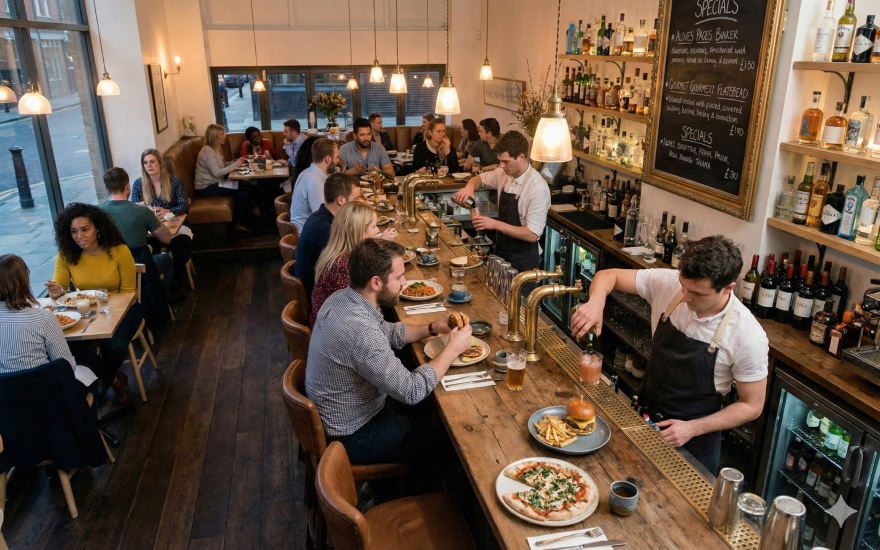Choosing Your Restaurants Location | 4 Factors to Consider

The restaurant business can be tough. Choosing the right location for your restaurant will improve your chances of success. In fact, 63% of voters claimed that location affected their dining decision. It’s all about location, location, location. You want great access to customers, you want them to notice your restaurant, and you want to make sure that you aren’t losing all your sales income on rent and wages. To make sure you choose the best restaurant location, look for the following factors when deciding on a space.
Nearby neighbours.
Pay attention to your neighbors; are there business towers or a campus nearby? Is the neighborhood suited for families or an aging population? Ideally, you want to choose a location close to your target demographic, and your preferred demographic should be able to afford to eat at your restaurant.
Keep an eye out for major customer sources. Choose a location near transit for a supply of quick serve customers, or a location near shops for people interested in fine dining. Your restaurant needs to be visible to attract customers, so space for signage and a noticeable storefront are essential to draw people inside.The best location should meet three criteria when it comes to neighbors:
- A nearby residential area,
- A retail area that generates both foot and vehicle traffic,
- A large customer source such as a tourist attraction, shopping centre, hospital, or university
Affordability and Work Space.
Know what you can afford. The rental amount and the amount of space you get work in contingency. Ideally, you want to pay no more than 8% of your sales in rent. Before you decide, make sure the location you have chosen is affordable as well as everything you are looking for. You don’t want to compromise on your space.
If possible, consider buying instead of leasing. If you plan to be there short-term, lease; if you plan to be there long-term, buying may be a better choice. Again, know what you can afford. Leasing requires a much smaller amount in start-up costs, and with a good lawyer you can negotiate your lease.
Jurisdiction and Laws.
Know what jurisdiction you are in, and what the labor laws are there. For example, in California, daily overtime is observed; in Arizona, it is not. You should also know what the minimum wage is in your area. That is not to say you should choose an area with the lowest wages, but you should be aware of the expenses you will incur and the availability of employees in the area.
Health regulations and zoning are laws you should also be looked into before deciding on a location. This will help you know what to expect if you do decide to open up shop in that area.
Accessibility.
Look for a parking area close to your location, or watch to see if you will get a lot of foot traffic. Check the traffic on both weekdays and weekends, during the day and at night, to get an idea of how busy the area might be. Pretend you are a customer and consider where you would park, and how easily you would be able to find a parking space. Notice where potential patrons are moving, and whether or not they would pass by your restaurant. If your location is inconvenient, it won’t get as many customers.
Ultimately, choosing the perfect location for your restaurant can greatly impact your success. An area that is close to your target market, with a visible storefront and easily accessible parking will give you better access to customers. An affordable space that doesn’t compromise your needs and has favorable labor laws will help to set your restaurant up for success.



